The catcher position is unique, so the Royals' trainer uses an individualized approach

The catcher position is unlike any other in baseball. That's why Kansas City Royals strength and conditioning coach Ryan Stoneberg molds workouts and training programs based on each player's unique traits.
“Each of these players are individuals and that’s how I treat them,” says Stoneberg, who enters his 15th season with the 2015 World Series champion Royals. “They are different ages, play different volumes of innings, have different training backgrounds [and] injury histories....It’s important to recommend what they need moving forward, while recognizing their individual backgrounds. It would be very easy to have all of these players do the same things, but it would not be as beneficial to the player or the team.”
Consistency. Intensity. Volume Control. Stoneberg explains that regardless of in-season or offseason training, these three areas are essential to the development of his catchers. Even though baseball is a sport of power and strength, there’s also a strong emphasis placed on minimizing soreness and quick recovery for those behind home plate.
“Maintaining strengths and attacking weaknesses is a priority during each season, and the offseason is a greater opportunity to be aggressive in doing so,” says Stoneberg, 41, who was awarded the 2015 Nolan Ryan Award by the Professional Baseball Strength and Conditioning Society. “During the season, we have to make sure the volume of training isn’t overwhelming so that players can go into the game prepared for what they get paid to do.”
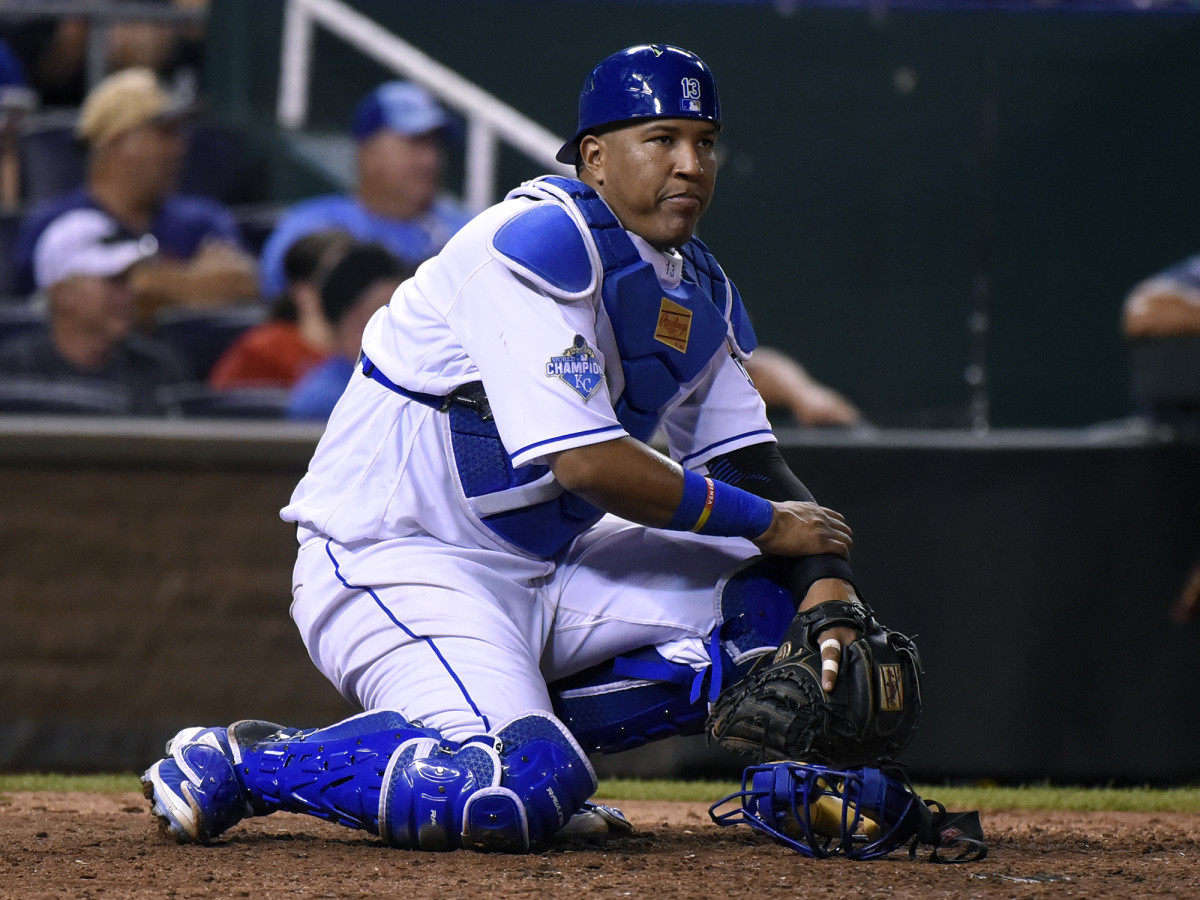
One of the keys to the catcher position lies in a player's ability to be functionally mobile while in a deep squat position. Stoneberg's prescription for mobility starts with improving range of motion in the hips, ankles and thoracic spine.
Squat exercises are minimal; Stoneberg prioritizes single leg- and hip-dominant movements—with a focus on pulling exercises rather than pressing movements—in order to help maintain an upright posture. The catchers’ regimen also includes core work and grip strength. All training is preceded by a structured warmup with soft tissue work, mobility drills and muscle activation exercises.
Cricks and cracks: Why back injuries are on the rise in MLB
“Individual training session volume is low for our starting catcher, but the frequency of sessions is high,” Stoneberg says. “He will typically train every other day. Our backup catcher [Drew Butera] trains with higher volumes, and he will incorporate consistent conditioning sessions to offset his lower playing time.”
Stoneberg sees Royals’ catcher Salvador Perez as a model skill position player in the team’s strength and conditioning program. Stoneberg individually controls Perez’s volume of work each day, with training sessions that are more frequent but contain approximately 75% the volume of other position players.
“Despite the high workload, he’s continued to play at a high level,” Stoneberg says of Perez. “Salvador has a large frame and plays a demanding position. In addition to his daily work in the weight room, I manually stretch him prior to each game. The game itself can create imbalances in flexibility, quickly. By stretching the athlete on a consistent basis, I can note unusual tightness that is forming relative to his normal range of motion and hopefully prevent an issue before it occurs.”
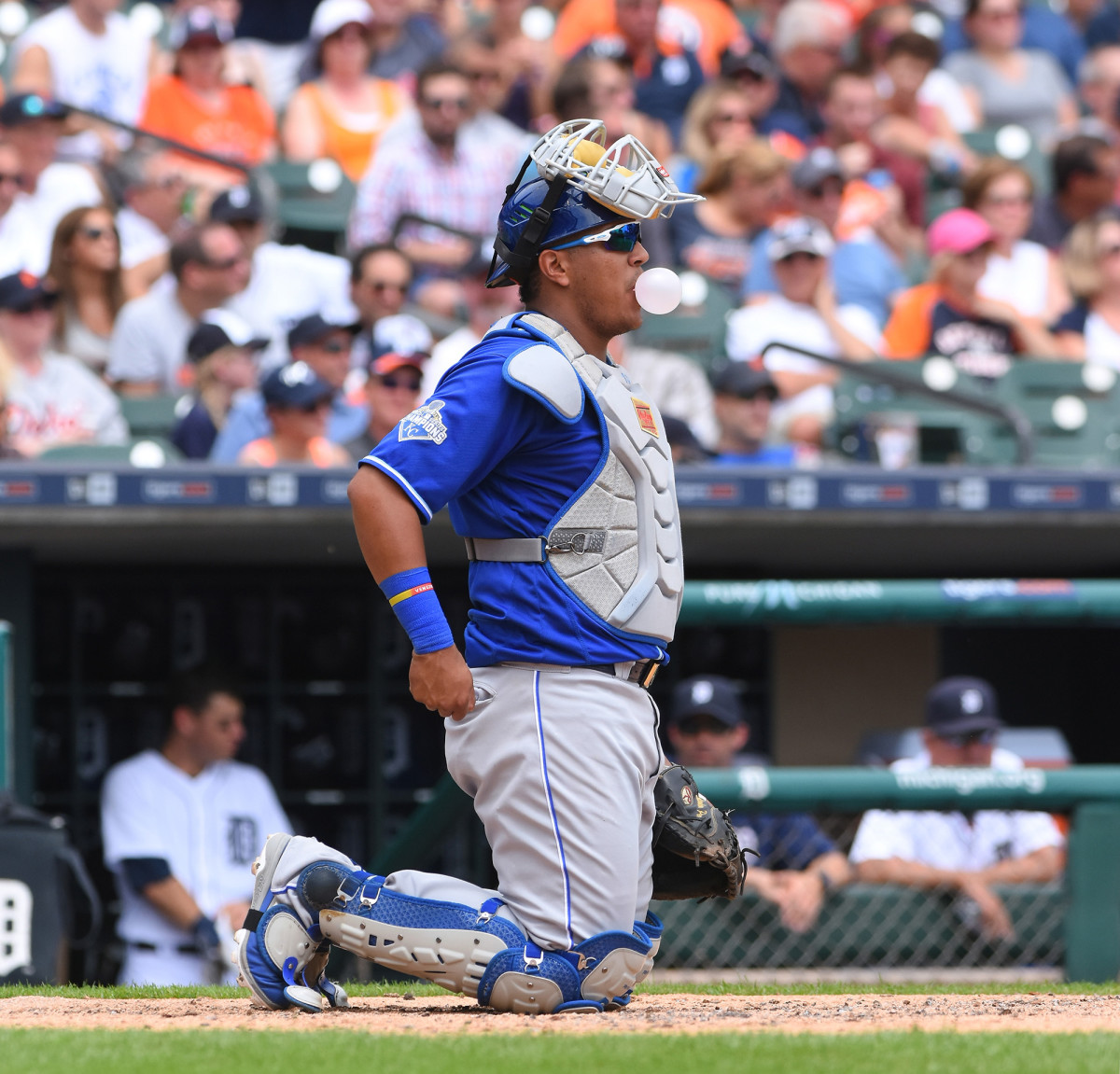
To help enhance recovery, maintain body composition and improve energy levels, Stoneberg also stresses nutrition, which can sometimes be problematic during the season.
“The desired diet can be difficult to maintain in professional baseball due to the constant travel,” Stoneberg explains. “We understand the value of proper nutrition and educate our players on working within their options to make the best possible choices at each meal.”
Innovation in hydration: How to prevent and identify dehydration during exercise
Stoneberg and the Royals’ medical staff also have spent a great deal of time and resources implementing technology into the strength and conditioning program. Players utilize cryotherapy (cold chambers), hyperbaric oxygen therapy (controlled atmospheric pressure chamber), hydrotherapy (water) and vibration technology (Hyperice's Vyper combines vibrations and foam roller in one device.)
“Aside from technology, we can never underestimate the power of our hearts and minds,” Stoneberg states. “While technology can show us many things, a coach’s eyes and ears will always benefit a player the most.
Our ability to listen to their input, read their body language and properly evaluate the logistical factors surrounding the game helps us to better adjust individual workouts to their benefit.”
Train like a Royal
Kansas City Royals strength and conditioning coach Ryan Stoneberg recommends the following stretches and exercise to help improve baseball fitness.
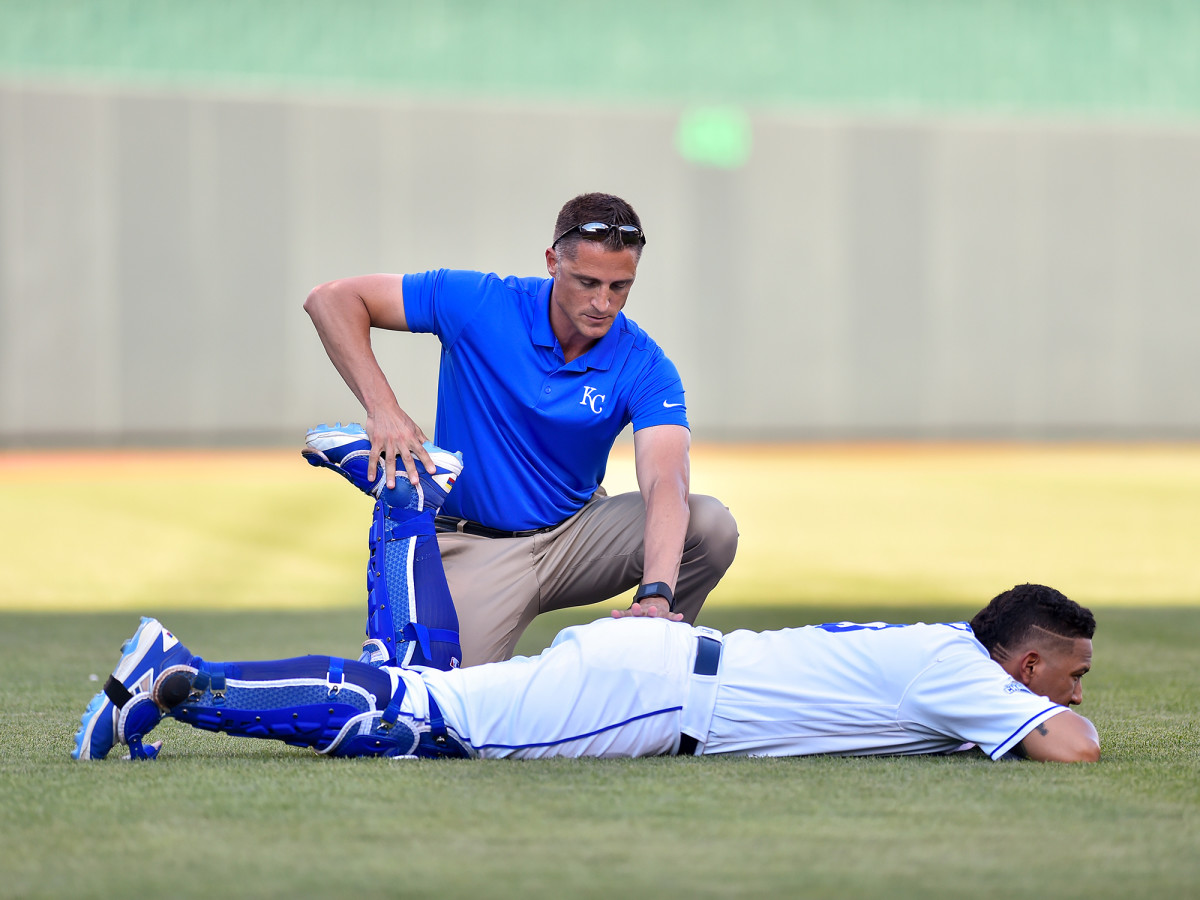
Band Assisted Hip Flexor Stretch
Tightness in the hip flexors is a common problem with many athletes. Creating more range of motion in the hip can allow increased glute activation and a reduction in lower back soreness.
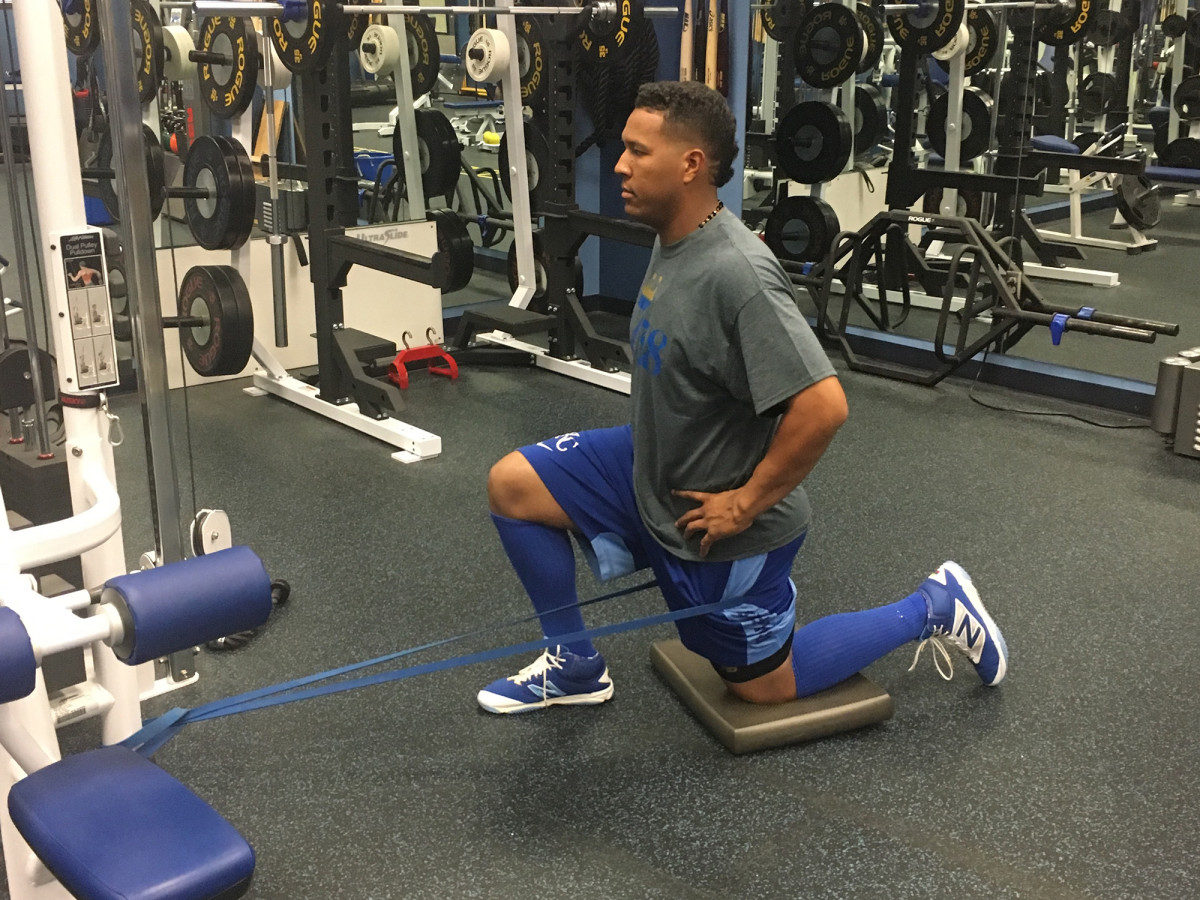
1. Take a stretch or resistance band and affix it to a sturdy object knee height or lower.
2. Step into the band with one leg and pull it upward as high as possible.
3. Walk back, creating tension on the band and kneel down (knee with band around leg is down) into a lunge position.
4. Keeping a good upright posture, squeeze the glute of the downward leg and allow the band to gently pull your hips forward, creating a great stretch for the targeted area.
5. Adjust the distance of where you kneel to create more or less tension with the band.
Cable Pull Through
A cable pull through is an excellent exercise to train the posterior chain (glutes and hamstrings) while reducing the stress on the spine. The exercise can also be done with a stretch or resistance band.
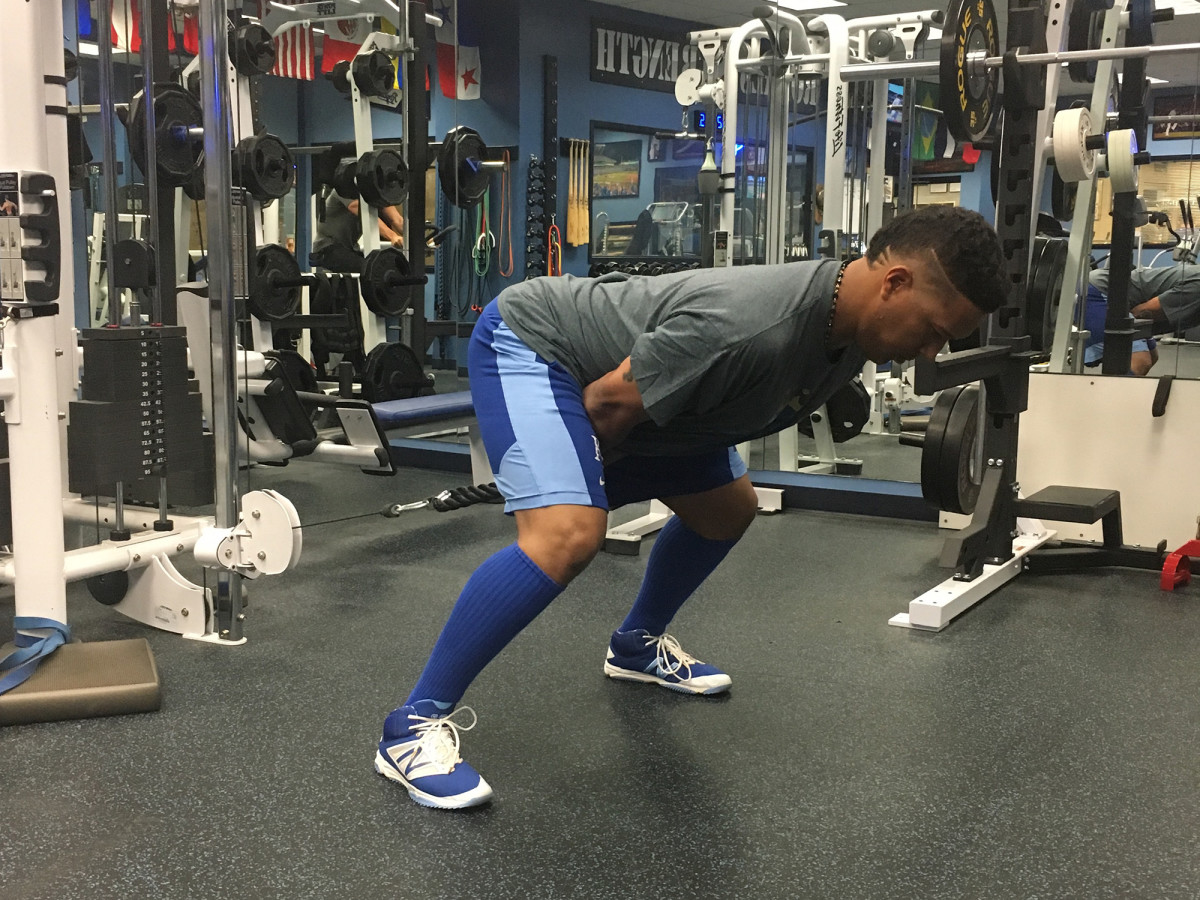
1. Affix a triceps rope to an adjustable pulley unit and drop it to the bottom position.
2. Face away from the cable unit, assume a wide stance with a slight knee bend and grab the rope between your legs.
3. Begin each repetition by reaching through the legs while maintaining a neutral spine position.
4. Pull forward by forcefully extending your hips (not pulling with your arms) and finish each repetition by squeezing the glutes.
